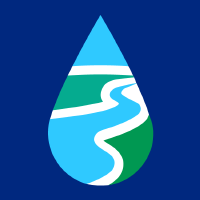Topic Menu
► Topic MenuTopic Editors


Human Impact on Groundwater Environment

Topic Information
Dear Colleagues,
This Topic aims to gather novel and innovative works of general interest for the broad audience of the journal related to the environmental implications of ever-growing human activities, with a particular emphasis on the changes these are inducing on groundwater. Global demand for water is projected to outstrip supply by 40% in 2030 and 55% in 2050 as a result of climate change, a rising population, economic growth, rapid urbanization, and increased water–energy–food nexus pressures. Humans are thus now facing the critical challenge of preserving our groundwater resources from biological and chemical contamination induced by its own point and diffuse sources. Addressing this challenge will require a holistic system approach by addressing new issues and emerging contaminants, as well as multiple embedded exposures to ultimately be able to achieve a comprehensive environmental and human health risk assessment.
Consequently, the contributions to this Topic will encompass a broad spectrum of topics in human impact on groundwater resources, including but not limited to: Emerging topics dealing with water resource vulnerability and human impact, including emerging and chemical contaminants; Advances in analytical techniques to monitor and identify sources and processes controlling the budget of human contaminants in water resources; Advances in hydrological processes and hydrodynamic models for investigating water vulnerability to human impact; Analysis of urban growth consequences for water resources and water management; Remote sensing applications for water vulnerability assessment; Linkage between water vulnerability, scarcity, security, and sustainability.
In this Topic, we aim to fill gaps on the application of hydrochemistry (including measurements of radioactive and stable isotope ratios, nutrients, trace elements, and organic components) on environmental research by asking for manuscripts which constitute original contributions on studies developing applications in hydrogeology, nutrient balances, pollution, environmental changes, as well as modeling or empirical studies aimed at improving our mechanistic understanding of short- and long-term chemical variations in global hydrological systems. The submission of inter- and multidisciplinary original research and review papers is particularly encouraged.
Prof. Dr. Zongjun Gao
Dr. Jiutan Liu
Topic Editors
Keywords
- groundwater resources
- human impact
- contaminants
- vulnerability
- hydrogeology
- environmental health
Participating Journals
| Journal Name | Impact Factor | CiteScore | Launched Year | First Decision (median) | APC |
|---|---|---|---|---|---|

Energies
|
3.0 | 6.2 | 2008 | 16.8 Days | CHF 2600 |

Hydrology
|
3.1 | 4.9 | 2014 | 15.3 Days | CHF 1800 |

Remote Sensing
|
4.2 | 8.3 | 2009 | 23.9 Days | CHF 2700 |

Sustainability
|
3.3 | 6.8 | 2009 | 19.7 Days | CHF 2400 |

Water
|
3.0 | 5.8 | 2009 | 17.5 Days | CHF 2600 |

Earth
|
2.1 | 3.3 | 2020 | 23.7 Days | CHF 1200 |

MDPI Topics is cooperating with Preprints.org and has built a direct connection between MDPI journals and Preprints.org. Authors are encouraged to enjoy the benefits by posting a preprint at Preprints.org prior to publication:
- Immediately share your ideas ahead of publication and establish your research priority;
- Protect your idea from being stolen with this time-stamped preprint article;
- Enhance the exposure and impact of your research;
- Receive feedback from your peers in advance;
- Have it indexed in Web of Science (Preprint Citation Index), Google Scholar, Crossref, SHARE, PrePubMed, Scilit and Europe PMC.
Related Topic
Published Papers (25 papers)
Planned Papers
The below list represents only planned manuscripts. Some of these manuscripts have not been received by the Editorial Office yet. Papers submitted to MDPI journals are subject to peer-review.
Title: Evaluation of agricultural measures to safeguard the vulnerable karst groundwater habitat of the black olm (Proteus anguinus parkelj) from nitrate pollution
Authors: Matjaž Glavan; Rozalija Cvejić
Affiliation: Agronomy Department, Biotechnical faculty, University of Ljubljana
Abstract: The black olm (Proteus anguinus parkelj Sket & Arntzen) is an endemic species found exclusively in the Dobličica River subterranean water systems of the Dinaric karst in southern Slovenia. These unique habitats are vulnerable to contamination due to rapid water flow, which can transport harmful substances that jeopardise subterranean ecosystems and drinking water quality. Nitrates, primarily from agricultural fertilisers and untreated urban wastewater, pose a significant threat as they can seep through the soil into black olm habitat. The safe limit of nitrate concentration for olms is 9.2 mg NO3-/l, yet measurements in karst springs have shown levels ranging from 3 mg to over 20 mg NO3-/l, often exceeding this threshold and endangering the species. The SWAT modelling tool assessed agri-environmental and land use scenarios for their impact on nitrate leaching. The most effective approach combines crop rotation, reduced fertilisation, and greening practices, potentially decreasing nitrate leaching by up to 60%. Implementing targeted agricultural practices that consider the region’s soil characteristics and hydrogeological conditions is essential to protecting the black olm and its habitat.

